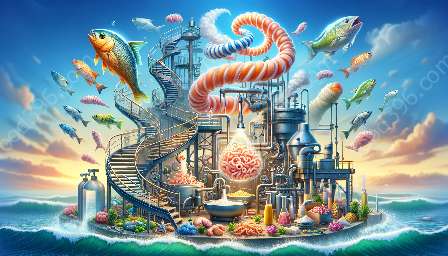As the demand for seafood continues to rise, so does the amount of waste generated by the seafood industry. This waste poses environmental and economic challenges, but there are innovative strategies and sustainable practices that can help reduce waste and improve seafood by-product utilization and waste management. In this article, we will explore various strategies for reducing waste in the seafood industry and discuss how seafood science plays a crucial role in creating a more sustainable and efficient seafood industry.
1. Improved Handling and Storage Practices
A significant portion of seafood waste occurs during handling, storage, and transportation. By improving handling and storage practices, such as using proper refrigeration, packaging, and handling techniques, the seafood industry can minimize spoilage and reduce the amount of wasted seafood. This not only helps in reducing waste but also ensures the quality and safety of the seafood products.
2. Utilization of By-Products
Seafood processing often generates by-products such as heads, bones, and shells, which are typically discarded as waste. However, these by-products can be utilized for various purposes, such as the production of fish meal, fish oil, and other high-value products. By developing technologies and processes for the efficient utilization of seafood by-products, the industry can reduce waste and generate additional revenue streams.
3. Sustainable Fishing Practices
Implementing sustainable fishing practices, such as selective harvesting and reducing bycatch, can help minimize the amount of discarded seafood. By avoiding excessive and non-targeted fishing, the industry can reduce unnecessary waste and safeguard marine ecosystems, contributing to long-term sustainability.
4. Adoption of Circular Economy Principles
The concept of a circular economy emphasizes minimizing waste and maximizing the use of resources. By adopting circular economy principles, the seafood industry can design processes and supply chains that prioritize waste reduction, resource efficiency, and the reuse of materials. This approach helps create a more sustainable and environmentally friendly seafood industry.
5. Collaboration and Innovation
Collaboration among stakeholders, including seafood producers, processors, government agencies, and research institutions, is essential for driving innovation and implementing sustainable waste reduction strategies. Innovations in seafood science, technology, and product development can lead to the creation of new products, improved production processes, and better waste management practices.
6. Education and Consumer Awareness
Increasing consumer awareness about the impact of seafood waste and the benefits of sustainable seafood consumption is crucial. Educating consumers about responsible purchasing and consumption habits can help reduce waste at the consumer level and encourage the demand for sustainably sourced seafood. By promoting responsible seafood choices, the industry can work towards minimizing waste throughout the supply chain.
7. Regulatory Measures
Government regulations and policies play a vital role in shaping the practices of the seafood industry. By implementing regulations that promote responsible waste management, sustainable fishing practices, and seafood by-product utilization, governments can drive positive change and ensure compliance with environmental standards.
8. Investment in Infrastructure and Technology
Investing in modern infrastructure and advanced technologies, such as waste treatment facilities, processing equipment, and resource recovery systems, can significantly improve waste management and by-product utilization within the seafood industry. Adopting state-of-the-art technologies enhances efficiency and supports the development of sustainable practices.
Conclusion
Addressing waste in the seafood industry requires a multifaceted approach that integrates innovative strategies, sustainable practices, and scientific advancements. By improving handling practices, utilizing seafood by-products, promoting sustainable fishing, embracing circular economy principles, fostering collaboration, educating consumers, implementing regulations, and investing in infrastructure and technology, the industry can work towards reducing waste and creating a more sustainable and efficient seafood sector. Through the application of seafood science and the commitment of industry stakeholders, a positive impact can be made on both environmental conservation and economic productivity.

